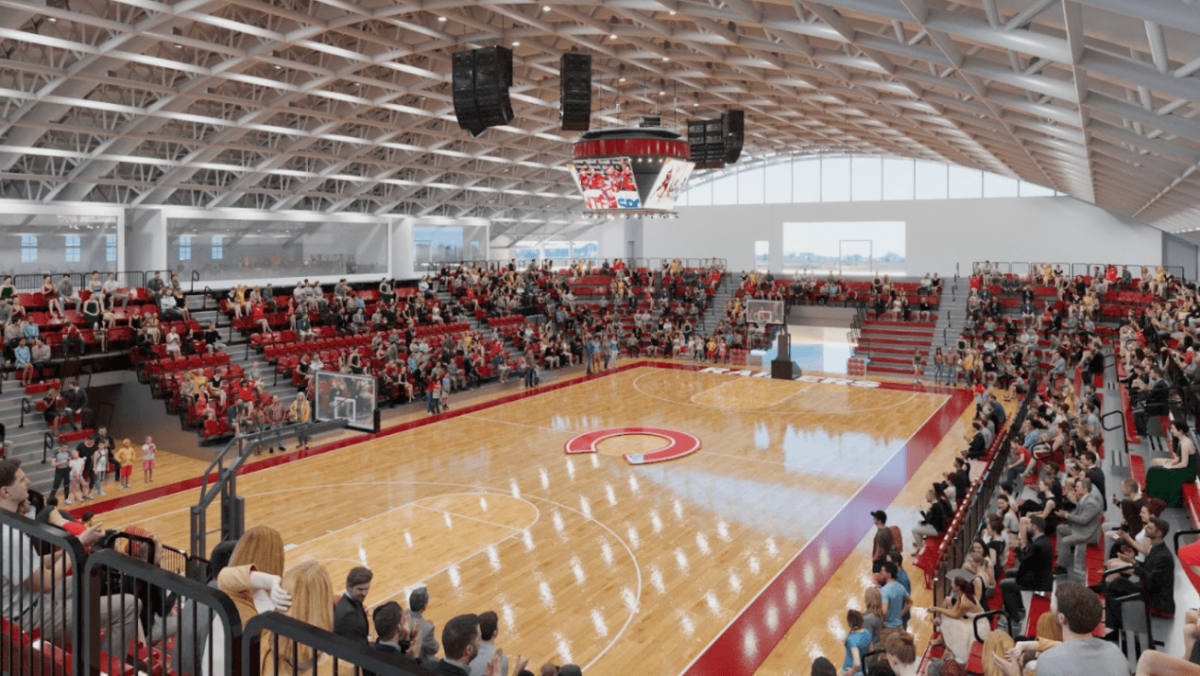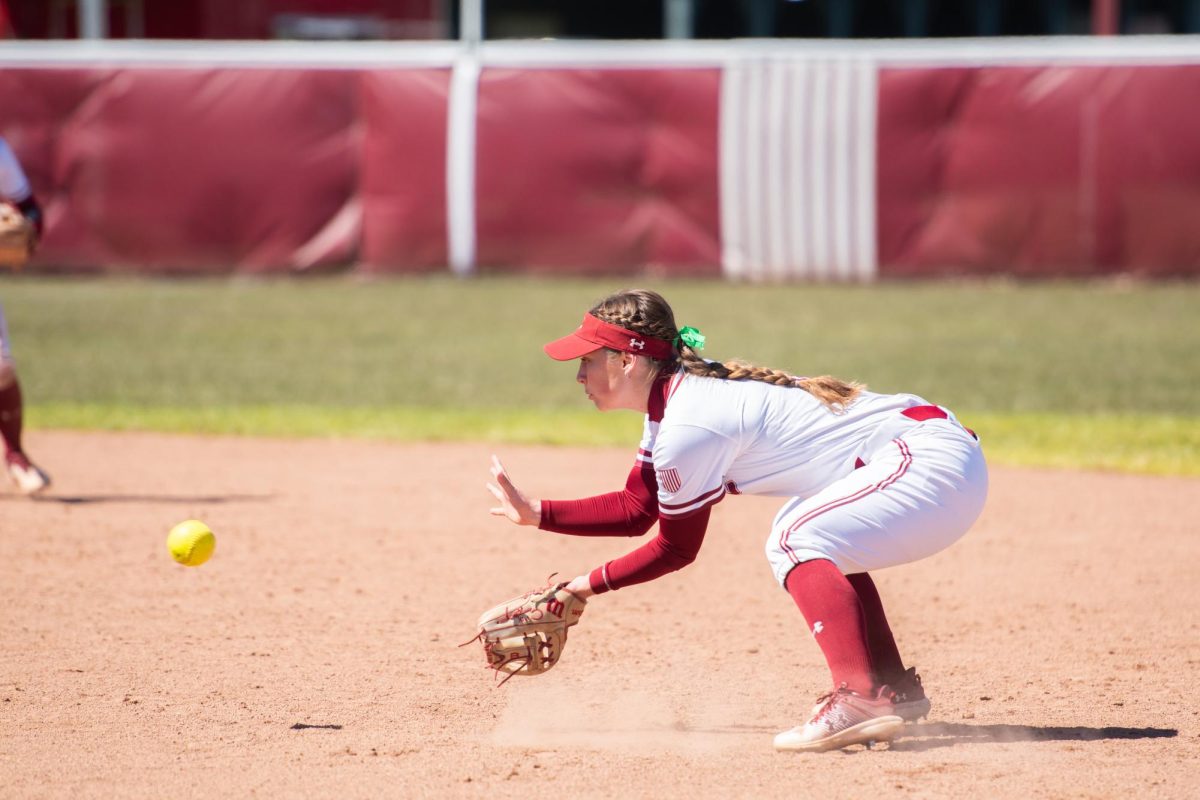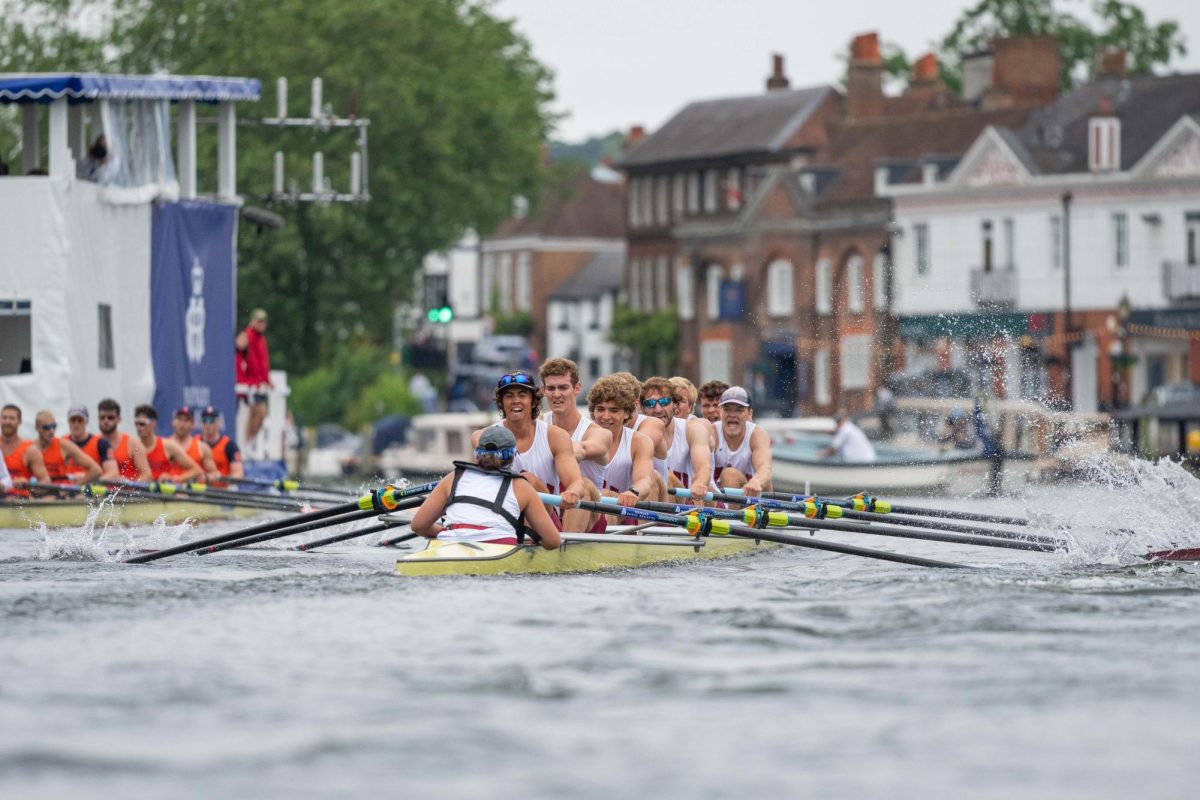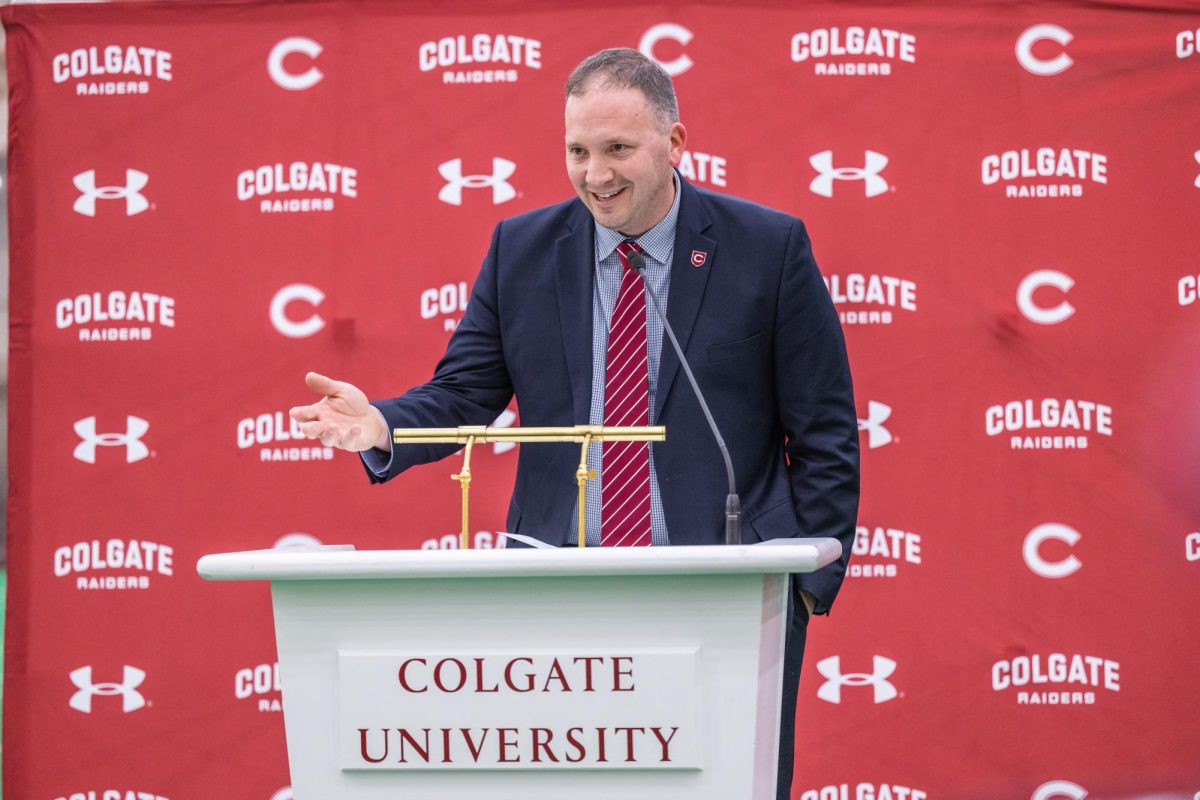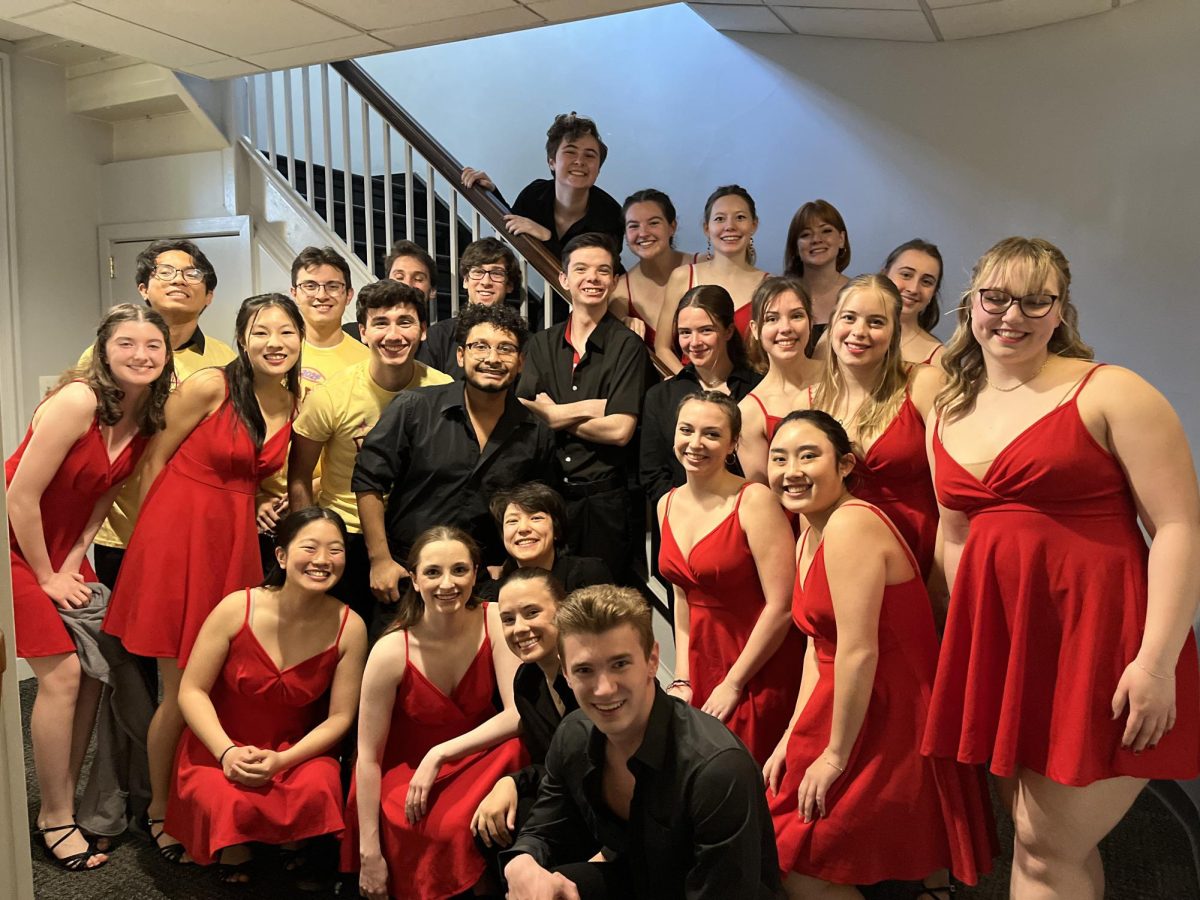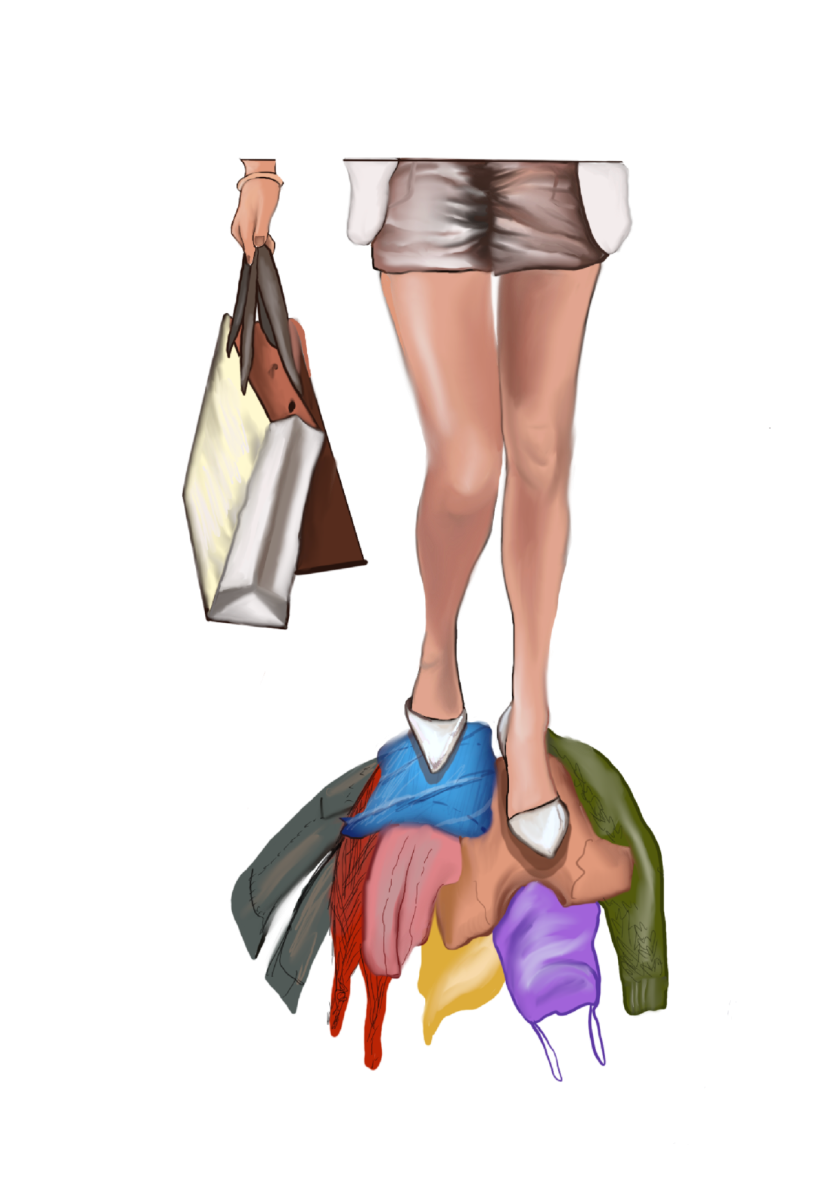This article is Part Three of a three-part series written after an interview with Athletic Director Yariv Amir earlier this semester. Part One covered Amir’s prior educational experience at Colgate University, including his formative time on the men’s rowing team. Part Two discussed Amir’s professional experience and extensive background working with student-athletes.
As construction continues to break ground on campus with promises to bring Colgate University’s Third-Century Plan to fruition, Colgate Athletics is set to enter a new era under the direction of Vice President and Director of Athletics Yariv Amir ’01. Colgate Athletics features heavily as a pillar of the Third-Century Plan, both in terms of physical projects and athletic program support.
One of Amir’s new responsibilities as Director of Athletics is acting as the face of Colgate Athletics in various capacities and advocating for the department in the largest campus community. Amir echoed the importance of the Third-Century Plan to the future of Colgate Athletics and the role it plays in his job.
“You see lots of construction going on around here. Part of the Third-Century Plan and the campaign is athletic facilities. So where do we fit into this conversation? When do our projects start? It’s a crazy puzzle piece, but [I’m] making sure our needs are being considered as we work through those models,” Amir said.
It’s clear, considering Amir’s experience overseeing the construction of the Class of 1965 Arena, that he is more than qualified to lead Colgate Athletics through this transformational era.
“I spent a lot of time and was involved in working with the architects and our teams on campus to bring [the Arena] to fruition,” Amir said.
While the development of larger capital projects for Colgate Athletics may not be as apparent as some of the initiatives in progress on the hill, they are still a crucial part of the Third-Century Plan. In describing the responsibilities of his role since being promoted to athletic director, Yariv Amir outlined his involvement in managing the development of projects as one of a few key responsibilities.
“We need to replace [Reid Athletic Center] and we’re going to, but that’s a thousand square feet that has to go somewhere else,” Amir said. “So aside from the external communication, that’s probably where I’m spending a ton of time. With architects and with our teams working through what our capital projects look like, I think that’s the biggest piece.”
While there is no publicly set timeline for the renovations to Reid Athletic Center, Colgate’s Third-Century Plan includes details and renderings for the planned changes, including the creation of the new Carey Center. The Carey Center will include an arena for the basketball and volleyball teams, new media facilities and a sports medicine/wellness center.
The new plan for the current home of Reid Athletic Center also features a new Athletics Quad, which will fully develop the Lower Campus. In addition, the Third-Century Plan includes a new Football Pavillion next to Andy Kerr Stadium. The development of Colgate’s athletic facilities will be connected to the rest of campus via Lally Lane and a new Raider Walk, a cohesive union connecting the Class of 1965 Arena and Tyler’s Field. Some of the other named developments include Olympic sports offices and locker rooms for the field hockey, softball, tennis, golf and track & field teams, as well as additional locker rooms and a marketing and production studio.
While all of these physical improvements are exciting news for student-athletes and Raider fans alike, the Third-Century Plan also includes an emphasis on improvements in recruiting and supporting student-athletes. The 14 listed funding priorities within the Third-Century Plan mention athletic program support as well as the athletic campus.
Amir emphasized athletic program support as one of his own personal priorities. This includes support for student-athlete development, performance and experience, endowing coaching positions and financial aid resources, as well as support for team travel, competition, apparel, equipment and mental performance.
While to some, athletics may seem to be tangential to the University’s operations, through the inclusion of athletics within Colgate’s Third-Century Plan, the success of our teams on a national stage and inclusion within the University, it is clear that Colgate values the role athletics play within the campus community.
“Our senior administrators or head coaches are faculty members, so we have a voice in campus governance,” Amir said. “In those meetings, at a lot of schools that representation isn’t there, so it just speaks to kind of the role athletics has on our campus.”
Amir emphasized that Colgate could be considered an exemplar of success for university athletics, even as the landscape of National Collegiate Athletic Association (NCAA) athletics changes rapidly in the face of the transfer portal and student-athletes becoming celebrities.
Amir noted the role that Colgate played in this change.
“[Colgate is] a model for the athletic [and] academic experiences for student-athletes in an ever-changing world, sticking to our core and the value we bring,” Amir said.
Let’s not forget that Colgate is unique in comparison to many peer institutions, as all of Colgate’s varsity sports compete at the Division I level, whereas most schools of comparable size are Division III. This helps attract both students and student-athletes alike, yet there are challenges for a school of Colgate’s size supporting such a robust athletic program.
“In the ever-evolving world of the NCAA, it takes a lot of resources to compete at the highest level. There are so many pieces that get to game day and we’re a small liberal arts school in Central New York [with] only so many resources, [so] we have to figure out how to divide them amongst 25 teams,” Amir said. “Obviously, with more, we can do more, so as we look to our campaign and initiatives moving forward, that’s important: How can we find incremental resources to provide to different programs?”
Despite Colgate’s small size, recent success in athletics across a variety of sports proves that this does not hold back our student-athletes from competing on the nation’s biggest stages. Amir noted the importance of student-athletes to his job and the role they play in shaping Colgate Athletics. He considers one of his primary responsibilities to be supporting student-athletes, including hearing from student groups such as the Student-Athlete Advisory Committee (SAAC).
“The other piece [of my job] is just being responsive to what the athletes want and [what’s] important to them. Through things like SAAC and other groups, we hear a lot of feedback, ideas and thoughts on how we can make our programs better or what we can do to enhance [them] or what isn’t working,” Amir said. “So [I try] to be reactive to feedback and [provide] support in real-time. If something’s not working, let’s fix it today.”
Reflecting on Colgate Athletics’ greatest strength, Amir emphasized the holistic student-athlete experience that he was once a part of.
“I think the biggest strength we have is Colgate as a whole,” Amir said. “Our athletic programs are all at different points in a cycle: some are really competitive right now, some are in a rebuilding state and some are somewhere in between. But I think the best kind of student-athletes at Colgate are the ones who come here motivated to engage in all that Colgate has to offer.”
While being a student-athlete, achieving success in Division I athletics at an elite academic institution is undoubtedly challenging. Colgate Athletics values developing student-athletes in every field, every arena and in all aspects of their Colgate experience.
“If we aim to only want the best athletes, they have to be able to handle the academic rigor of Colgate,” Amir said. “But [if] we’re going to say they can’t do A, B and C because they have to focus on athletics, that’s just not the people who are most successful at Colgate. I think we need to embrace supporting our student-athletes through all of that and I think our teams that are the most successful do that.”
While Amir has only been at the helm of Colgate Athletics as Vice President and Director of Athletics for five months, with a clear path forward outlined by the Third-Century Plan, the future is bright for the Colgate Raiders.


